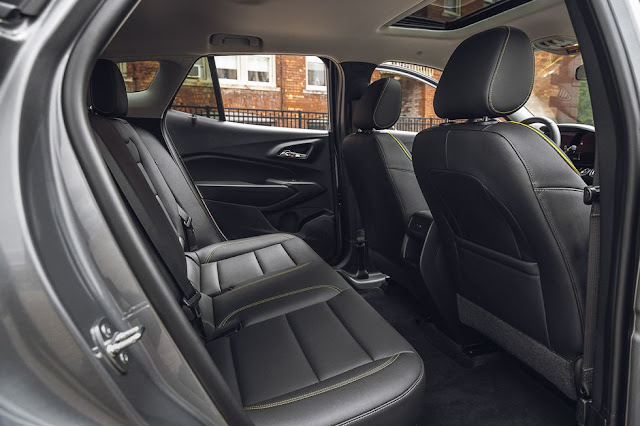Value City: 2024 Chevrolet Trax
Settling for what you can afford often means getting something you don't like. The new Chevrolet Trax will change that.
From the November 2023 issue of Car and Driver.
Automakers are guilty of chasing numbers. You can blame us to a certain degree, for egging them on by testing as many cars as we do. But one number that fewer and fewer automakers aspire to is the lowest price. We're avoiding the word "cheap" because it has a negative connotation as it defines both quantitative and qualitative attributes. This gives us reason to celebrate the newly recast and redesigned Chevrolet Trax, which is simultaneously affordable and exceptional.
By our count—we include the unavoidable destination charge—there are 19 automobiles on the market today that cost less than $25,000. A bare-bones Trax is $21,495, and the Activ, tested here, represents the top of the line at $24,995. That trim opens the door to some deluxe features, including an 11.0-inch touchscreen and keyless entry and starting. The Sunroof ($895) and Driver Confidence ($795) packages, found on our test car, net wireless charging, adaptive cruise control, rear parking sensors, blind-spot monitoring, and lane-departure warning. Wireless CarPlay and Android Auto come standard, even in the base model.
The cabin does feature plastics that a durometer would scratch, but pleasing switchgear compensates. Chevy got the touchpoints right—the steering wheel has a most welcome supple leather wrap, and the shifter is a lever coming out of the console, not some dial or confusing array of buttons. Pull the lever into D, and the turbocharged 1.2-liter inline-three makes it obvious that it's got but 137 horses. Holding your foot to the floor for 8.8 seconds will take you to 60 mph. Thanks to its torque peak of 162 pound-feet occurring at 2500 rpm, the wee size of the engine goes unnoticed in typical day-to-day driving—until you need to get ahead of a semi before a merge. The 50-to-70-mph passing time is 6.4 seconds, and a 70-to-90-mph jaunt is more like 10.
The gravelly growl the three emits under duress is more offensive than the 72-decibel reading at full throttle indicates. But at 70 mph, the cabin hums a 69-decibel tune you'd swear was lower still. At that speed, the engine turns about 2250 rpm, and the Trax tracks arrow straight with great on-center steering feel. Like its predecessor, however, the new Trax fell short of its EPA highway estimate (32 mpg) in our 75-mph real-world test, returning just 30 mpg.
What you can't get in any Trax is all-wheel drive. You have to step up to the roughly $5000-pricier Trailblazer to get that in a Chevy SUV. But a decent set of winter tires will get a Trax anywhere you want it to go. Chevy's press release calls this new model "reimagined," a euphemistic way of acknowledging that the previous-generation Trax needed a thorough rethink.





